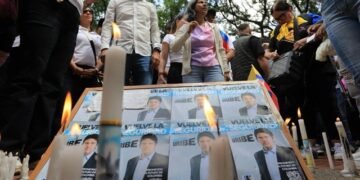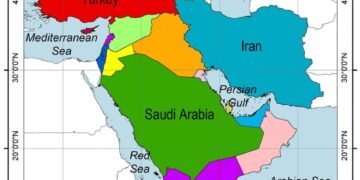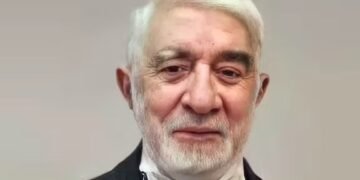Journalist and analyst: SH T
Introduction
In recent years, the Islamic Republic of Iran has faced significant internal and external challenges that have led many analysts to speculate about the regime’s future and its potential collapse. From economic and social crises to widespread public dissatisfaction and intense international sanctions, Iran’s current situation can be described as precarious and critical. This report examines the internal and external circumstances of the Islamic Republic and explores the potential role of the Taliban amidst claims that the regime might exploit such threats for its benefit.
Part 1: Domestic Situation of the Islamic Republic
1. Economic Crisis
- Inflation and Currency Devaluation: Persistent high inflation, coupled with a steep decline in the value of the Iranian rial, has severely impacted people’s purchasing power and the cost of essential goods. Iran’s reliance on oil and gas exports has left its economy vulnerable, particularly with dwindling revenue streams due to sanctions.
- Crippling Sanctions: Economic sanctions, especially following the U.S. withdrawal from the JCPOA, have slashed Iran’s oil exports and blocked its access to international financial systems.
- Systemic Corruption: Institutional corruption and inefficiency within government bodies hinder economic recovery. Parastatal organizations like the Islamic Revolutionary Guard Corps (IRGC) dominate key sectors, further exacerbating economic opacity and inefficiency.
2. Public Discontent and Protests
- Widespread Protests: Nationwide protests, such as the “Woman, Life, Freedom” movement sparked by the death of Mahsa Amini, reflect a shift in public dissent. These protests have moved beyond economic grievances to demand systemic political change.
- Harsh Crackdowns: The regime has responded with mass arrests, brutal crackdowns, and executions to suppress dissent. However, these measures have only deepened public resentment.
- Crisis of Legitimacy: The growing divide between the younger generation and the regime’s ideology, combined with controlled and uninspiring elections, has further eroded the system’s legitimacy.
Part 2: External Challenges and the Role of the Taliban
1. International Pressures
- Sanctions and Diplomatic Isolation: Iran’s diplomatic and economic options are severely limited due to international sanctions and strained relationships with key regional and global players.
- Role of Major Powers: While the West, particularly the U.S. and Europe, pursues a maximum-pressure campaign against Iran, allies like China and Russia offer limited support based on their own strategic interests.
2. Taliban Threat and the Regime’s Potential Strategy
- Developments in Afghanistan and Taliban Threats: The Taliban’s return to power in Afghanistan has reignited tensions, including disputes over water rights and border security. The Taliban, with its distinct ideology and aggressive posture, poses a tangible threat to Iran.
- Exploiting External Threats: The Islamic Republic might use the Taliban threat to rally domestic support and divert public attention from internal crises. Historically, external threats have been leveraged by the regime to foster unity and justify suppression.
- Risks of Escalation: Any escalation into full-scale conflict with the Taliban could exacerbate Iran’s existing vulnerabilities. The regime’s strained military and economic capacities may render it unable to effectively respond, potentially leading to strategic setbacks.
Part 3: Possible Scenarios
1. Scenario of Regime Collapse
- If domestic protests escalate into a coordinated and sustained movement, coupled with economic deterioration, the regime may lose its grip on power.
- External pressures and the involvement of opposition forces or foreign actors could accelerate this process.
2. Scenario of Regime Survival
- The government might rely on widespread repression, mobilization of loyalists, and portraying external threats like the Taliban to maintain control.
- Limited economic and military aid from allies such as Russia and China could bolster the regime’s resilience.
3. Scenario of Gradual Change
- Should the Islamic Republic undertake structural reforms in its economy and governance, it might avoid collapse and transition towards gradual change. However, there is little evidence to suggest that the regime is willing or capable of such reforms.
Conclusion
The Islamic Republic of Iran stands at a critical juncture. Internal discontent, external pressures, and regional threats, including the Taliban, have created a multifaceted crisis that could define the regime’s future. While exploiting the Taliban threat may temporarily serve as a distraction, it could also backfire if tensions escalate into direct conflict. The regime’s survival will depend on its ability—or inability—to manage these intersecting crises.

 English
English






































